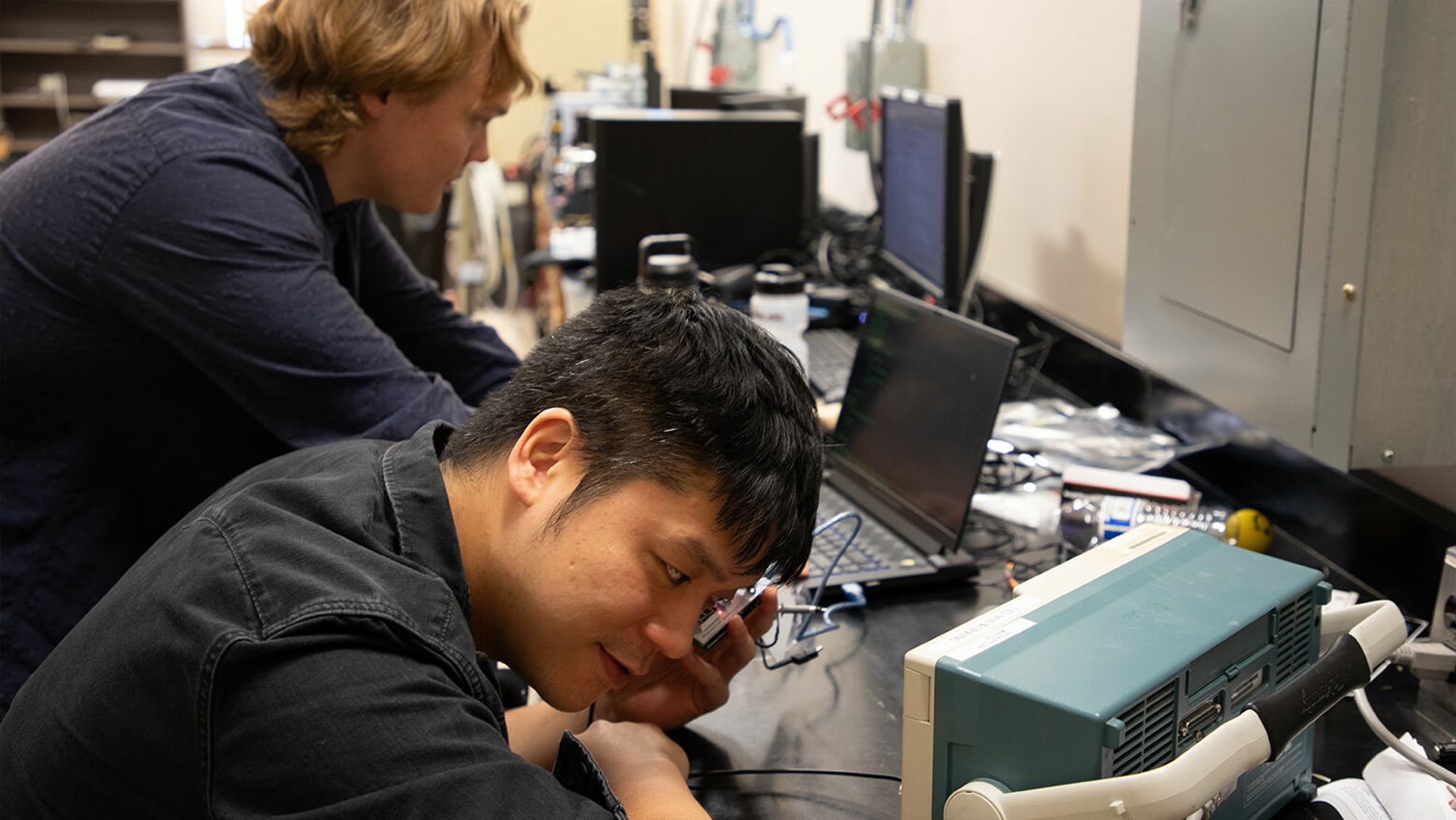I’m very grateful to Texas A&M. They gave me an opportunity to fall in love with electrical engineering. Here, the people, the resources and the environment make it fun.
Two doctoral students in the Department of Electrical and Computer Engineering at Texas A&M University recently won first in the U.S. and second in the region at the 2023 Embedded Security Challenge.
Established in 2008 by the Department of Computer Science at New York University Tandon School of Engineering, this hardware security competition is the oldest in the world and part of Cybersecurity Awareness Worldwide (CSAW).
Peng-Hao Huang, a third-year electrical engineering doctoral student, and Nicholas Heinrich-Barna, a first-year computer engineering doctoral student, dedicated two months to solve a series of six side-channel attacks on cyber-physical systems challenges for the event. In cybersecurity, cyber-physical systems are vital to many industries and critical infrastructure systems because they secure sensitive information.

“Our mentality really revolved around finding ways to get certain responses consistently,” Heinrich-Barna said. “Once that happened, we could profile where the next challenge led us. Then, we could start exploring the design space a little bit more, at which point we could usually crack the problem and find the answer or the flag.”
The competition included a qualification phase, where teams submitted a research paper to get accepted, and a competition phase, where two challenges were released each week for three weeks. During this time, students could work on any prior challenges, but the tasks increased in complexity as the weeks progressed.
In the end, each team submitted a final report encompassing the qualification report, lessons learned, and a detailed account of how they solved all the challenges. The teams then traveled to New York to present their findings. They were judged throughout the entire process, but presentation scores were given at the final competition.
“We were very fortunate to have the opportunity to go to New York for the CSAW competition,” Nick said.
The team was tasked during the competition to build devices or write code to help solve specific challenges. Huang and Heinrich-Barna competed in the region encompassing the U.S., Middle East and North Africa, placing second.
“We solved the challenges as best we could, but there's also a lot of room for improvement,” Heinrich-Barna said. “Even though we beat all of the American teams, we still lost to several teams internationally. And that leaves a lot of motivating reasons to keep working hard, to come up with some generalizable techniques and to develop a framework in the future to help catch certain clues, which are really important to solving challenges.”

Dr. Prasad Enjeti, an electrical and computer engineering professor, and Dr. Jeyavijayan Rajendran, an electrical and computer engineering associate professor, advised and prepared Huang and Heinrich-Barna for the educational tournament.
“Both Professor Rajendran and Professor Enjeti foster a conducive learning environment,” Heinrich-Barna said. “What that means is you’re not just using their resources and their labs to do ‘x’ thing. They go out of their way to teach you practical and useful material, useful enough to do well in CSAW.”
“Dr. Enjeti gave us many opportunities to get to involved in multidisciplinary research,” Huang added. “That's why I got involved in this security competition because my main focus is power electronics. However, Dr. Enjeti gave us the resources to learn different perspectives and details of cyber-physical systems.”
This is the first time the Texas A&M team has competed at CSAW. They hope to use the research they conducted during the event to publish a paper and explore new avenues of learning.
“I’m very grateful to Texas A&M,” Huang said. “They gave me an opportunity to fall in love with electrical engineering. Here, the people, the resources and the environment make it fun. And hopefully, I can research new ideas that inspired me from this competition to broaden my mindset.
“We welcome more people interested in security to join our team. Next year, we’d like to be the best in the world.”